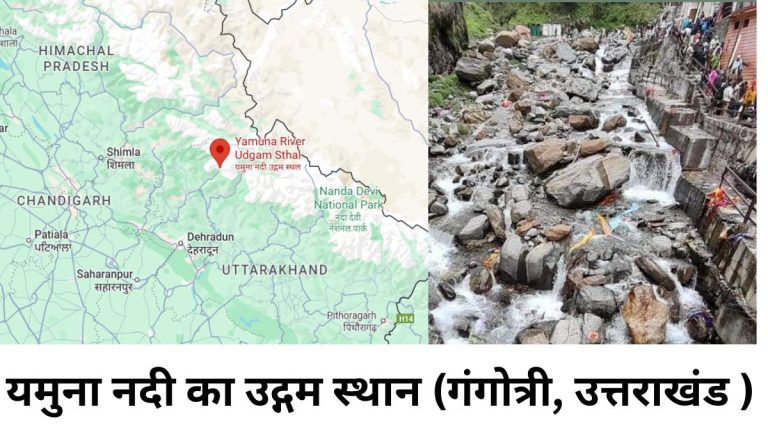Access the latest NCERT Solutions for Class 10 Geography Chapter-3: Water Resources, updated for 2024-2025. Solution is designed to help students tackle difficult questions with ease. The content is written in simple, easy-to-understand language.
Exercise
Multiple Choice Questions (MCQs)
(i) Based on the information given below, classify each of the situations as ‘suffering from water scarcity’ or ‘not suffering from water scarcity’.
1. Region with high annual rainfall.
Answer: Not suffering from water scarcity.
Explanation: High rainfall typically ensures sufficient water availability.
2. Region having high annual rainfall and large population.
Answer: Suffering from water scarcity.
Explanation: Even with high rainfall, a large population puts pressure on water resources.
3. Region has high annual rainfall but water is highly polluted.
Answer: Suffering from water scarcity.
Explanation: Polluted water is not fit for consumption, leading to water scarcity.
4. Region having low rainfall and low population.
Answer: Not suffering from water scarcity.
Explanation: A low population may result in lower water demand, balancing the scarce rainfall.
(ii) Which one of the following statements is not an argument in favor of multipurpose river projects?
1. (a) Multipurpose projects bring water to those areas which suffer from water scarcity.
2. (b) Multipurpose projects by regulating water flow help to control floods.
3. (c) Multipurpose projects lead to large scale displacements and loss of livelihood.
4. (d) Multipurpose projects generate electricity for our industries and homes.
Answer: (c) Multipurpose projects lead to large scale displacements and loss of livelihood.
Explanation: This is a criticism rather than an argument in favor of these projects.
(iii) Here are some false statements. Identify the mistakes and rewrite them correctly.
1. Multiplying urban centers with large and dense populations and urban lifestyles have helped in proper utilization of water resources.
Correction: Multiplying urban centers with large and dense populations have aggravated water scarcity due to overexploitation of water resources.
2. Regulating and damming of rivers does not affect the river’s natural flow and its sediment flow.
Correction: Regulating and damming of rivers disrupts the river’s natural flow and alters the sediment distribution.
3. Today in Rajasthan, the practice of rooftop rainwater harvesting has gained popularity despite high water availability due to the Indira Gandhi Canal.
Correction: The practice of rooftop rainwater harvesting has declined in Rajasthan due to the availability of water from the Indira Gandhi Canal.
Short Answer Questions (30 Words)
1. Explain how water becomes a renewable resource.
Answer: Water is renewable because it is replenished through the hydrological cycle, which includes processes like evaporation, condensation, and precipitation, ensuring continuous availability.
2. What is water scarcity and what are its main causes?
Answer: Water scarcity is the shortage of usable water. Main causes include rising demand due to population growth, pollution of water sources, overexploitation for agriculture, and unequal distribution.
3. Compare the advantages and disadvantages of multipurpose river projects.
Answer:
Advantages: Provide water for irrigation, generate electricity, help control floods.
Disadvantages: Cause displacement of people, alter ecosystems, increase sedimentation, and sometimes fail to control floods effectively.
Long Answer Questions (120 Words)
1. Discuss how rainwater harvesting in semiarid regions of Rajasthan is carried out.
Answer: In semiarid Rajasthan, rainwater harvesting is done through tankas (underground tanks) built in courtyards or houses. Rainwater from rooftops is directed into these tankas through pipes. The first rainfall cleans the rooftops, and subsequent rain is stored. This collected water, called palar pani, is used during dry periods. Techniques like khadins (floodwater harvesting) and johads (earthen dams) are also used to capture rainwater and recharge groundwater.
2. Describe how modern adaptations of traditional rainwater harvesting methods are being carried out to conserve and store water.
Answer: Modern rainwater harvesting builds on traditional practices by incorporating PVC pipes, sumps, and filters to collect and store rooftop rainwater. In urban areas, water collected in sumps is stored for immediate use, and excess water is directed to recharge groundwater. Recharge wells and abandoned dug wells are also used to replenish aquifers. These adaptations ensure sustainable water management and reduce dependence on municipal supply systems.
Other Important Short answer Type Questions
Below are important short answer type questions with answers based on the NCERT Class 10 Chapter 3 Water Resources, aligned with past NCERT exams and UPSC patterns:
1. What is water scarcity, and what are its causes?
Answer: Water scarcity refers to a situation where water availability is less than the demand. It can be caused by:
1. Overexploitation of water resources.
2. Increasing population leading to higher domestic and agricultural water needs.
3. Pollution of water sources by industrial and agricultural activities.
4. Uneven rainfall and overdependence on groundwater.
2. What is the importance of rainwater harvesting?
Answer: Rainwater harvesting helps conserve water by collecting and storing rainwater for future use. It reduces dependence on groundwater, helps manage water scarcity, and prevents flooding. Traditional practices like tankas in Rajasthan and kuls in Himachal Pradesh show how local knowledge adapted to regional needs.
3. Explain how multipurpose river projects benefit society.
Answer: Multipurpose river projects provide several benefits:
1. Irrigation: Ensuring water supply for agriculture.
2. Electricity generation: Using hydropower to meet energy demands.
3. Flood control: Regulating river flow during heavy rains.
4. Water supply: For domestic and industrial purposes.
5. Fish breeding and tourism: Supporting livelihoods.
4. What are the environmental impacts of large dams?
Answer: Large dams can have several negative environmental impacts:
1. Loss of biodiversity: Dams alter river ecosystems and fish migration patterns.
2. Sedimentation: Leads to loss of soil fertility downstream.
3. Displacement: Submergence of villages and relocation of people.
4. Soil salinization: Overirrigation may increase soil salinity.
5. Describe the traditional water conservation methods used in Rajasthan.
Answer: In Rajasthan, traditional water conservation methods include:
1. Tankas: Underground storage tanks connected to rooftops to collect rainwater.
2. Khadins: Fields that collect rainwater, allowing it to percolate and moisten the soil.
3. Johads: Small earthen check dams to store runoff water.
6. What is the significance of Atal Bhujal Yojana?
Answer: The Atal Bhujal Yojana aims to manage groundwater sustainably in water stressed regions by promoting conservation efforts. It focuses on behavior change in communities and encourages efficient water use in agriculture to prevent groundwater depletion.
7. How do urban lifestyles contribute to water scarcity?
Answer: Urban lifestyles lead to increased water consumption for domestic use, energy, and industrial purposes. Practices like over extraction of groundwater and wastage through leakage further aggravate the problem, resulting in water scarcity.
8. What role does agriculture play in water scarcity?
Answer: Agriculture consumes the largest amount of freshwater. The use of water intensive crops, such as rice and sugarcane, and the expansion of irrigated areas have led to overexploitation of groundwater resources.
MCQs: Water Resources
Here are 20 multiple choice questions (MCQs) based on Chapter 3: “Water Resources” from the NCERT Class 10 Geography textbook. These questions reflect themes likely to appear in NCERT exams and UPSC preliminary exams, ensuring relevance and helpfulness for preparation.
MCQs on Water Resources (NCERT Class 10, Chapter 3)
1. What percentage of the Earth’s surface is covered by water?
a) 50%
b) 66%
c) 75%
d) 33%
Answer: c) 75%
2. Which sector in India is the largest consumer of water?
a) Industry
b) Domestic use
c) Agriculture
d) Power generation
Answer: c) Agriculture
3. By what year is it predicted that 2 billion people will face absolute water scarcity?
a) 2030
b) 2025
c) 2040
d) 2050
Answer: b) 2025
4. Which of the following is NOT a cause of water scarcity?
a) Unequal access to water
b) Overexploitation of water resources
c) Seasonal variations in rainfall
d) Desalination of seawater
Answer: d) Desalination of seawater
5. Which Indian state made rooftop rainwater harvesting compulsory for all houses?
a) Gujarat
b) Maharashtra
c) Tamil Nadu
d) Rajasthan
Answer: c) Tamil Nadu
6. What is the goal of the Jal Jeevan Mission (JJM)?
a) Provide 100 liters of water per capita daily
b) Ensure piped water supply to every rural household
c) Build new dams across major rivers
d) Promote industrial water conservation
Answer: b) Ensure piped water supply to every rural household
7. Which of the following projects spans four states, including Gujarat and Madhya Pradesh?
a) Tehri Dam
b) BhakraNangal Dam
c) Sardar Sarovar Dam
d) Hirakud Dam
Answer: c) Sardar Sarovar Dam
8. Which Indian river is known as the “River of Sorrow”?
a) Damodar
b) Kaveri
c) Ganga
d) Krishna
Answer: a) Damodar
9. What is the main issue caused by excessive sedimentation in dam reservoirs?
a) Increased electricity production
b) Enhanced water quality
c) Reduced aquatic habitats
d) Increase in agricultural productivity
Answer: c) Reduced aquatic habitats
10. Which mission focuses on improving irrigation efficiency in India?
a) Jal Jeevan Mission
b) Pradhan Mantri Krishi Sinchai Yojana
c) Atal Bhujal Yojana
d) Swachh Bharat Abhiyan
Answer: b) Pradhan Mantri Krishi Sinchai Yojana
11. Which practice helps recharge groundwater in arid regions like Jaisalmer?
a) Rainwater harvesting
b) Bamboo drip irrigation
c) River linking projects
d) Building hydropower dams
Answer: a) Rainwater harvesting
12. What is the main purpose of multipurpose river projects?
a) Prevent droughts in urban areas
b) Control floods, generate power, and store water
c) Increase sediment flow in rivers
d) Convert rivers into tourist destinations
Answer: b) Control floods, generate power, and store water
13. Which of the following is a disadvantage of multipurpose projects?
a) Increased fish breeding
b) Loss of aquatic biodiversity
c) Enhanced groundwater recharge
d) Improved agricultural output
Answer: b) Loss of aquatic biodiversity
14. Which method is used to conserve water in Meghalaya using bamboo pipes?
a) Bamboo rainwater tanks
b) Bamboo drip irrigation
c) Rooftop rainwater harvesting
d) Community irrigation ponds
Answer: b) Bamboo drip irrigation
15. Which multipurpose project is located in the SutlejBeas river basin?
a) Hirakud Dam
b) Sardar Sarovar Dam
c) BhakraNangal Dam
d) Tehri Dam
Answer: c) BhakraNangal Dam
16. What is a common ecological consequence of intensive irrigation?
a) Enhanced soil fertility
b) Soil salinization
c) Water purification
d) Reduced agricultural output
Answer: b) Soil salinization
17. Which Indian state faces water scarcity despite receiving high rainfall?
a) Gujarat
b) Maharashtra
c) Meghalaya
d) Tamil Nadu
Answer: c) Meghalaya
18. What are ‘tankas’ used for in Rajasthan?
a) Industrial waste storage
b) Water filtration
c) Storing drinking water
d) Rice cultivation
Answer: c) Storing drinking water
19. Which interstate water dispute involves the KrishnaGodavari basin?
a) Karnataka and Andhra Pradesh
b) Gujarat and Maharashtra
c) Tamil Nadu and Kerala
d) Punjab and Haryana
Answer: a) Karnataka and Andhra Pradesh
20. Which ancient irrigation system was used in the Western Himalayas?
a) Johads
b) Khadins
c) Guls or Kuls
d) Tankas
Answer: c) Guls or Kuls
Other Chapter
| Chapter 1:- Resources and Development | Chapter 2:- Forest and Wildlife Resources |
| Chapter 4:- Agriculture | Chapter 5:- Mineral and Energy Resources |
| Chapter 6:- Manufacturing Industries | Chapter 7:- Lifeline of National Economy |





























